Swingin' Wing - Shell Promotion Model Casting Differences
This model was originally issued in 1970 with an adjustable white plastic wing in back, but it was removed for this promotional release and the mounting openings were cast closed, with vents molded in their place. Also, the metal slide-out engine was eliminated, the body opening was cast closed and exhaust pipes were cast into the base.
This 1970 Spectraflame Magenta model shows the white plastic adjustable wing.

This 1973 promotional Light Blue enamel car looks bare in comparison to the original model and should have been renamed, as it no longer has a "Wing" to "Swing".
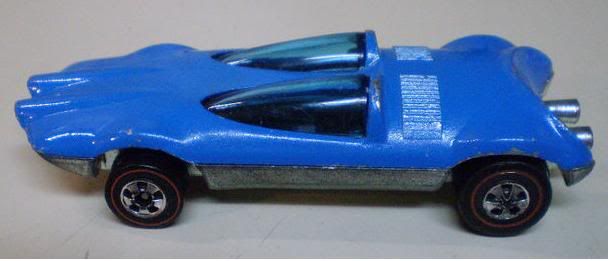
A close-up of this 1970 Spectraflame Magenta model shows the original, twin tail pipes pulled out, exposing the concealed slide-out rear engine.
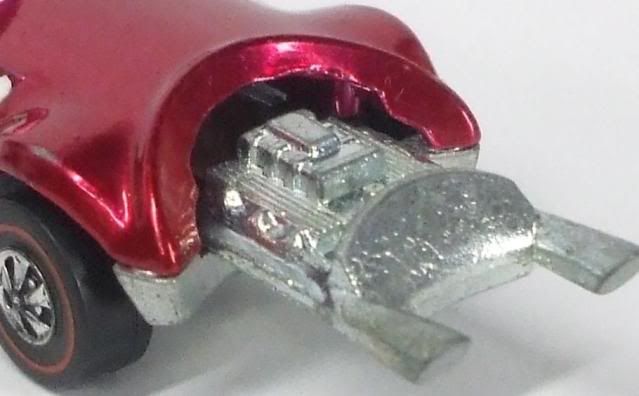
This Red enamel promotional car shows the body molded closed in back and the exhaust pipes cast into the metal base.
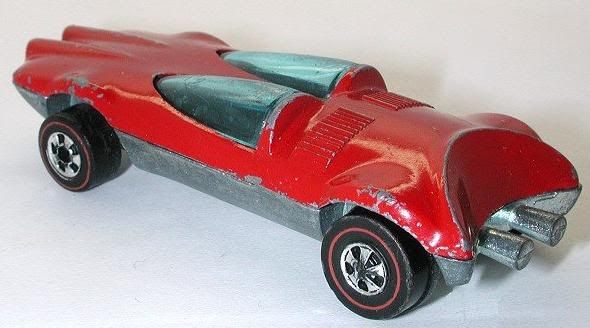
A Blue enamel model in the original packaging, with a 39-cent "Special" price sticker, what a deal !!!
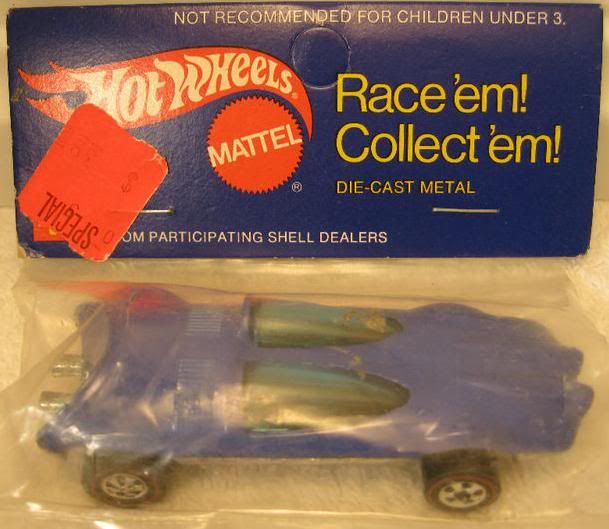
This model was originally issued in 1970 with an adjustable white plastic wing in back, but it was removed for this promotional release and the mounting openings were cast closed, with vents molded in their place. Also, the metal slide-out engine was eliminated, the body opening was cast closed and exhaust pipes were cast into the base.
This 1970 Spectraflame Magenta model shows the white plastic adjustable wing.

This 1973 promotional Light Blue enamel car looks bare in comparison to the original model and should have been renamed, as it no longer has a "Wing" to "Swing".

A close-up of this 1970 Spectraflame Magenta model shows the original, twin tail pipes pulled out, exposing the concealed slide-out rear engine.

This Red enamel promotional car shows the body molded closed in back and the exhaust pipes cast into the metal base.

A Blue enamel model in the original packaging, with a 39-cent "Special" price sticker, what a deal !!!

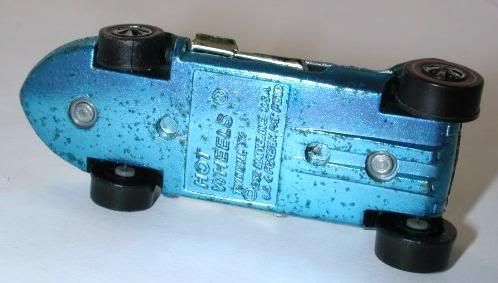
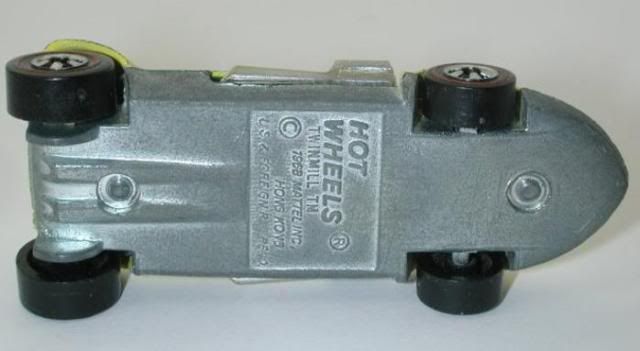

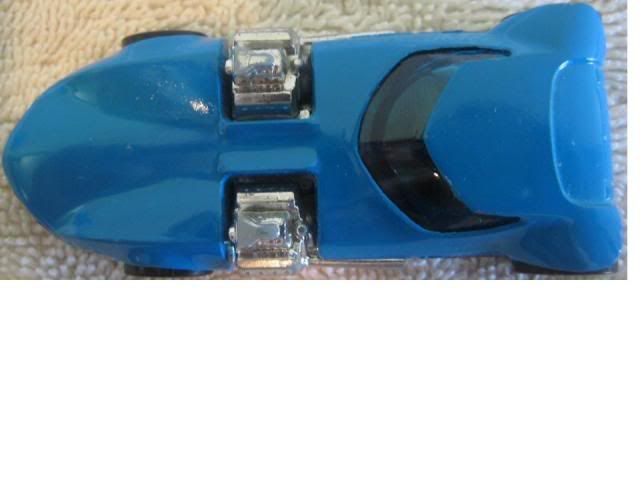

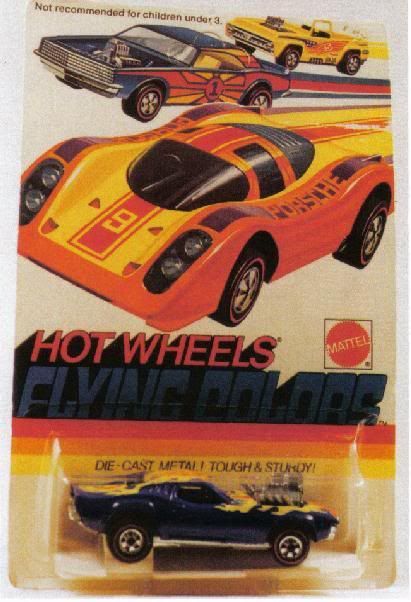
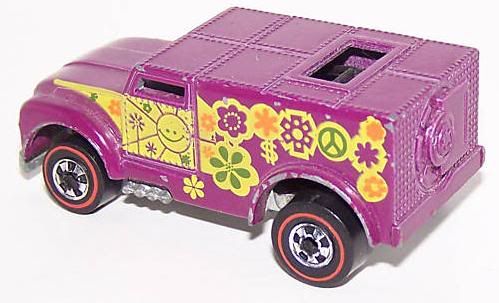
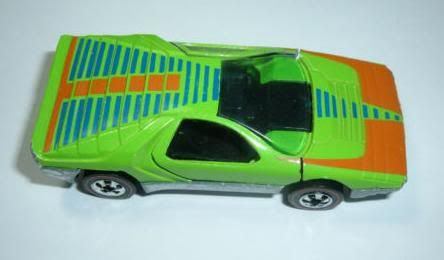

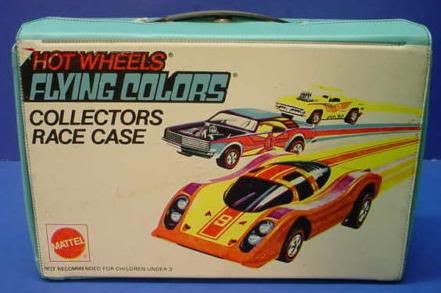
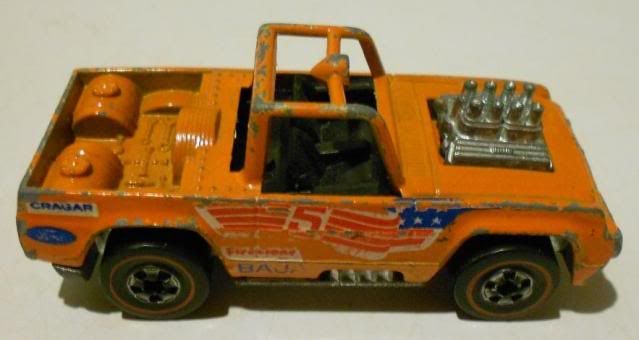
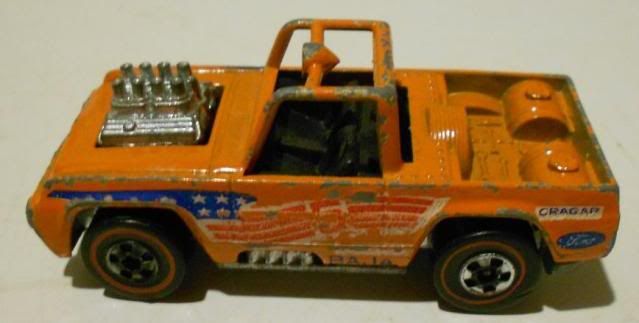
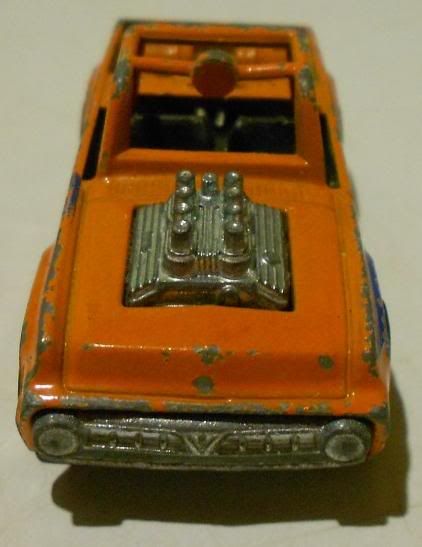
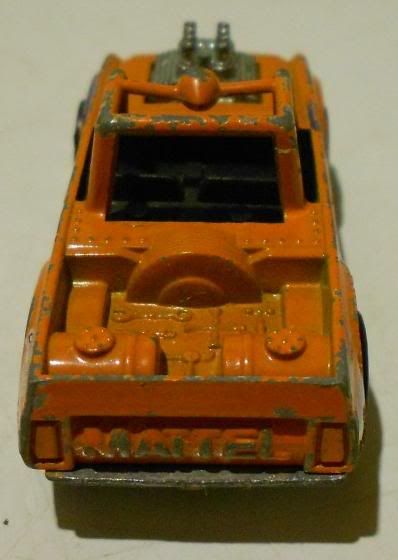
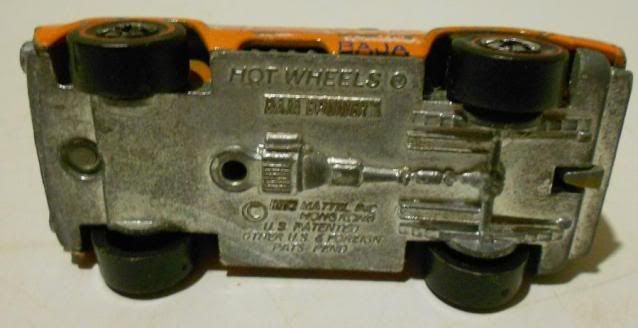
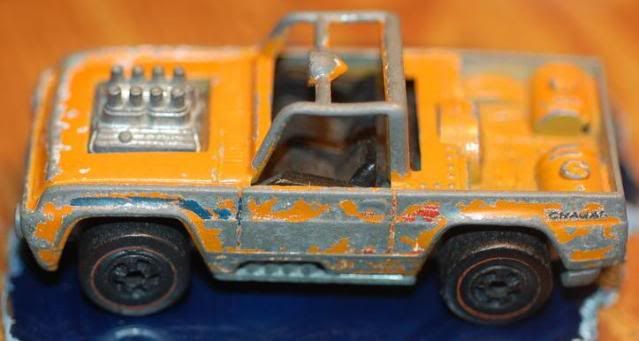
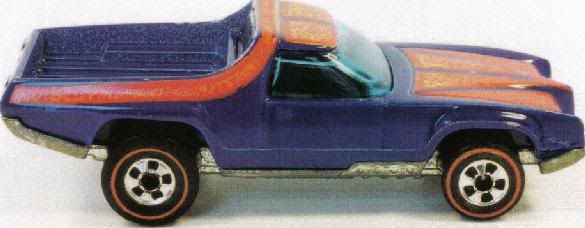
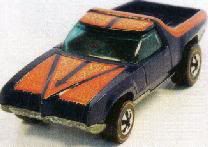


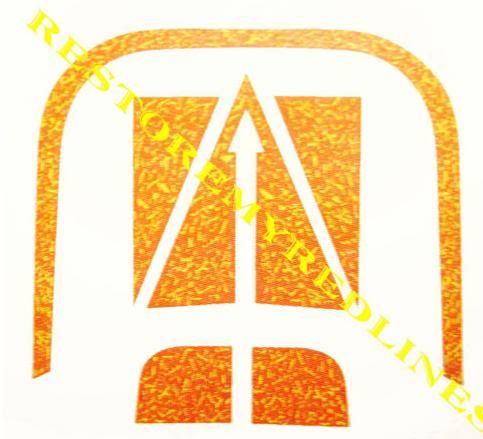
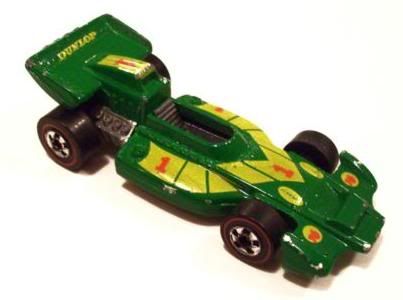
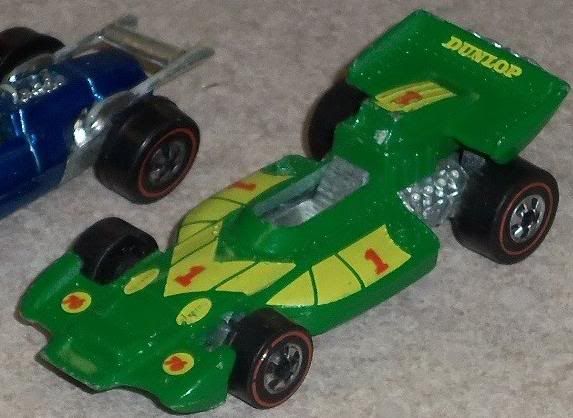
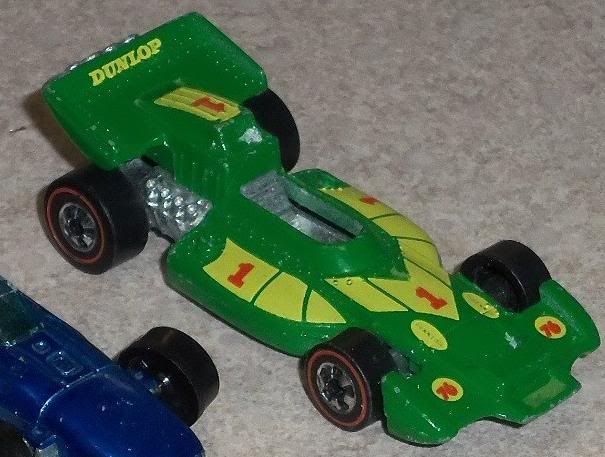
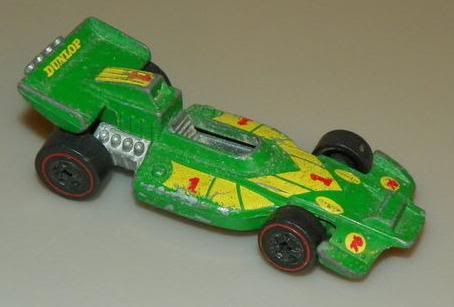
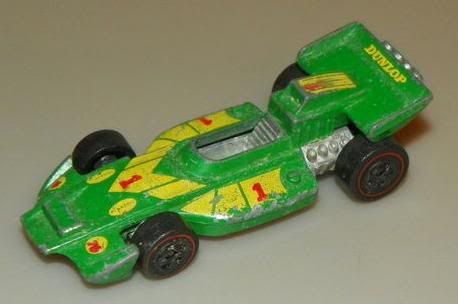

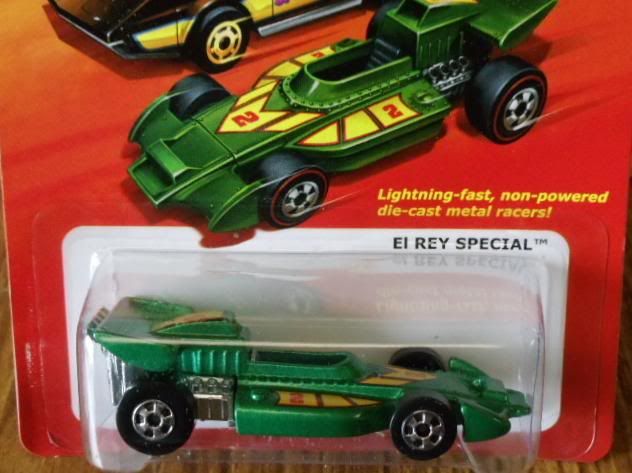
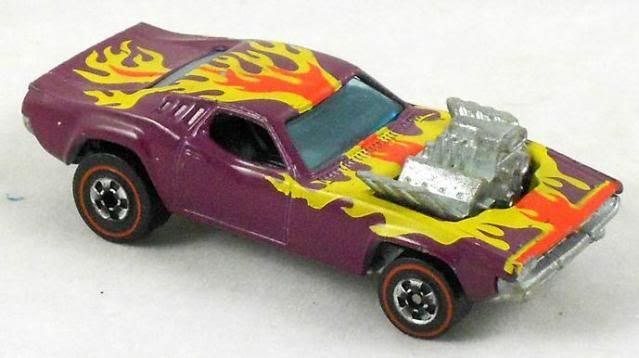

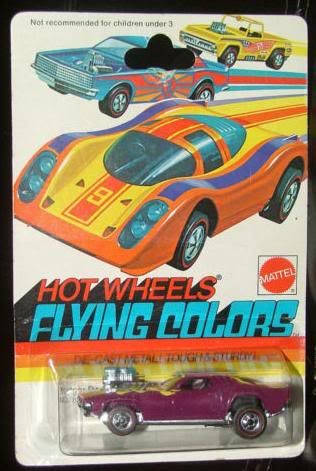
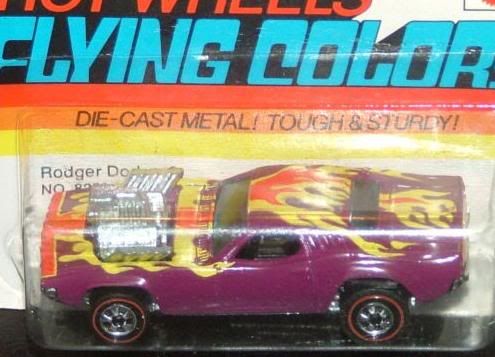
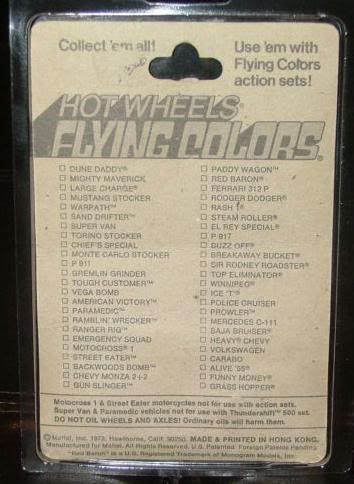
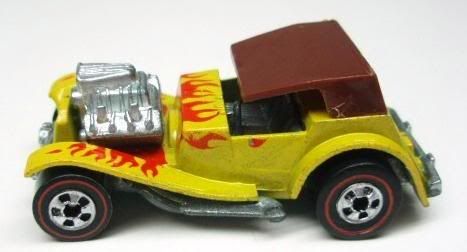

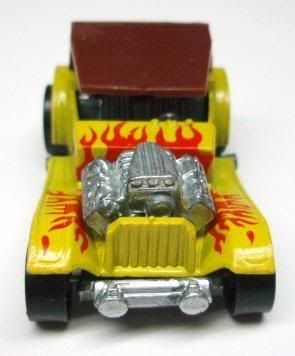
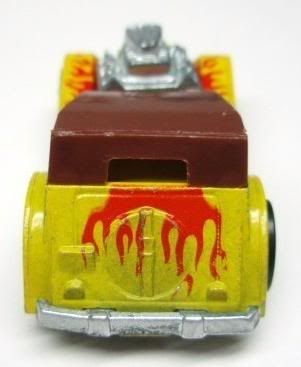
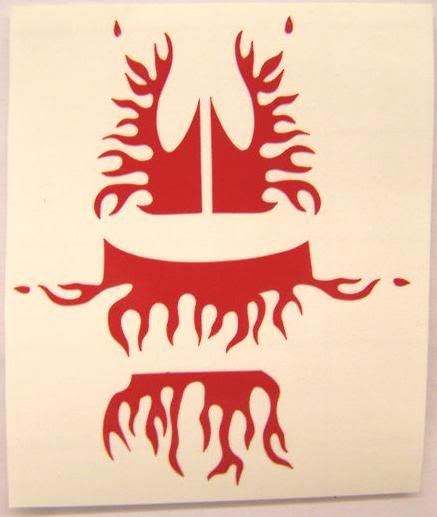
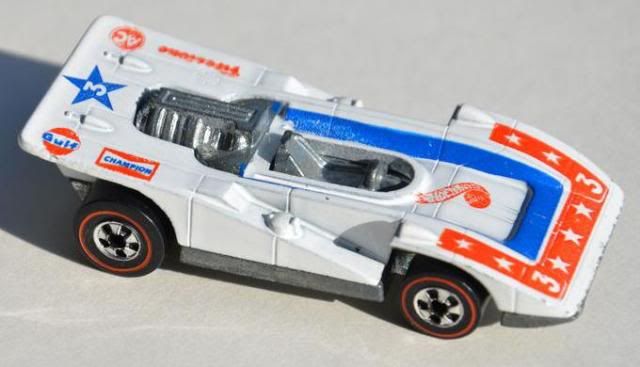
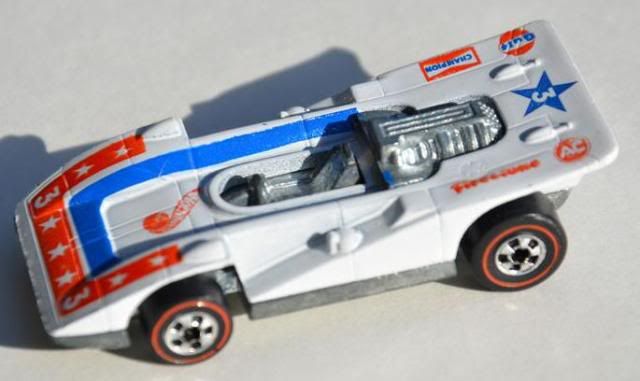
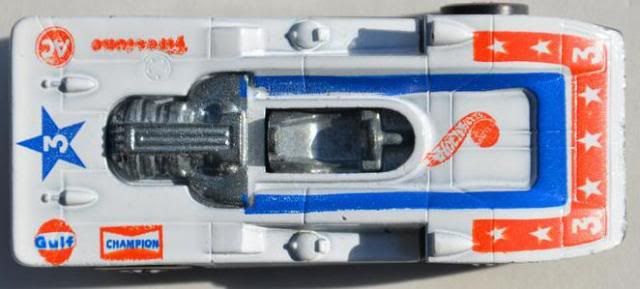


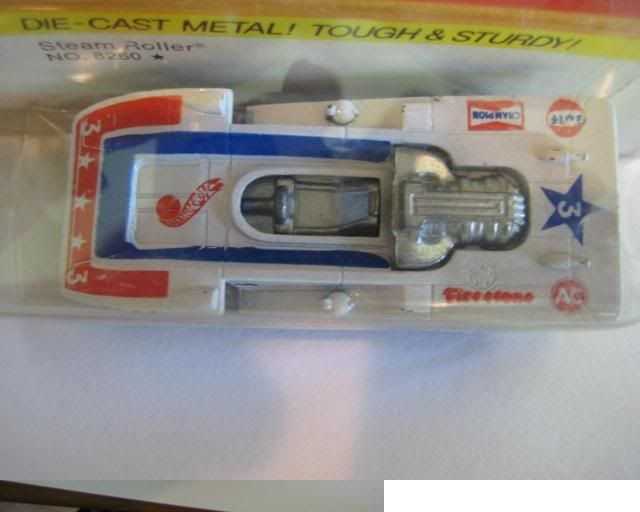
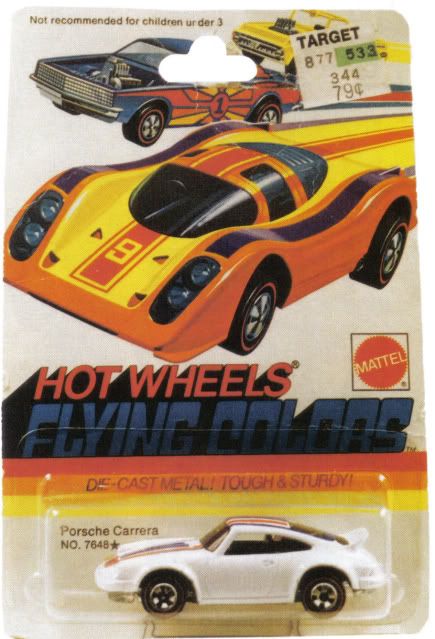




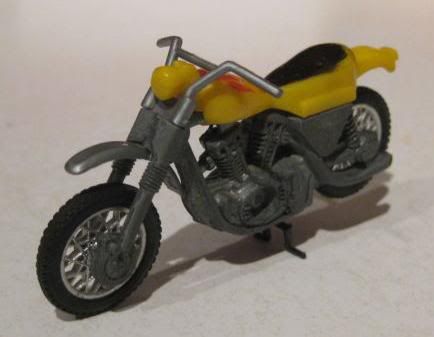
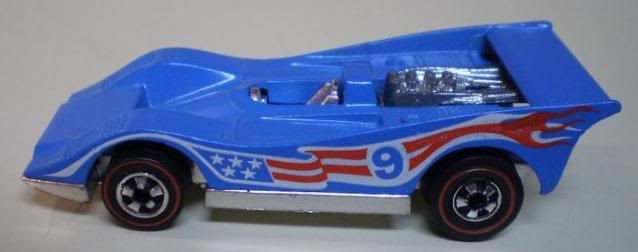
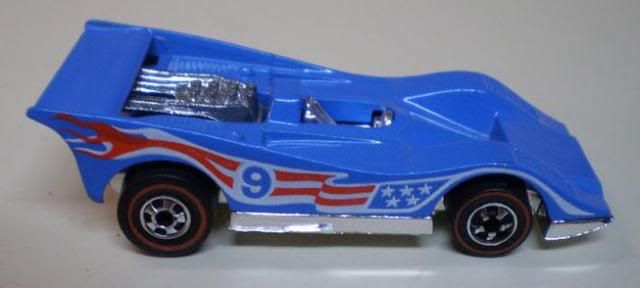
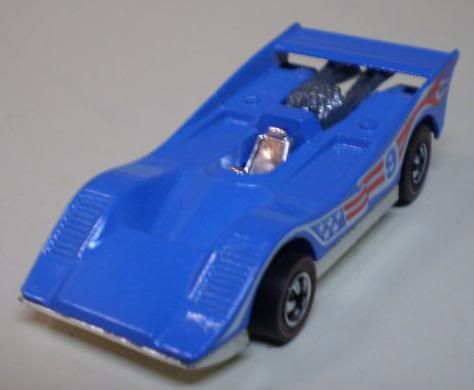
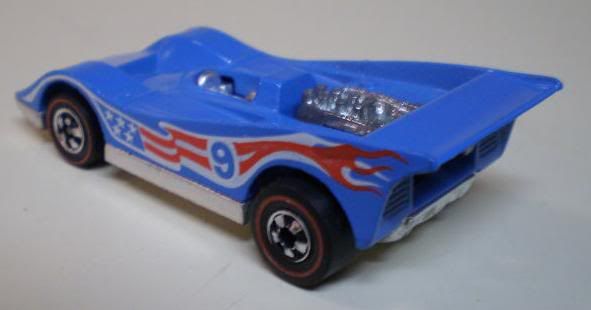
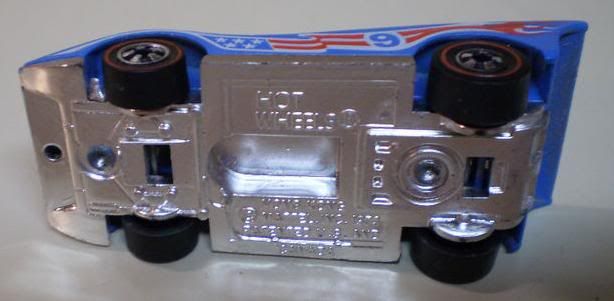
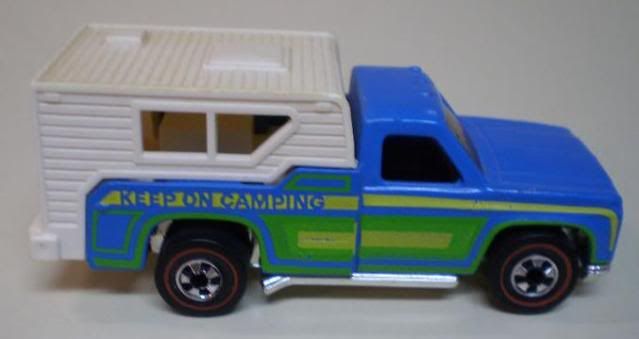
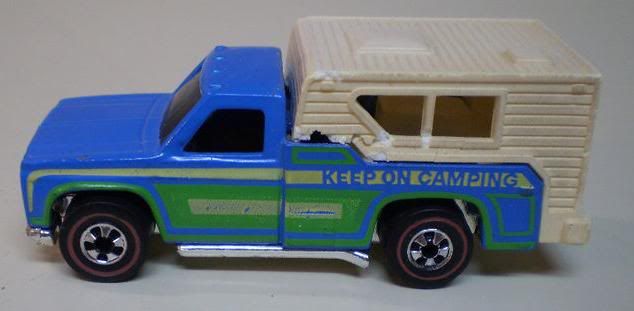
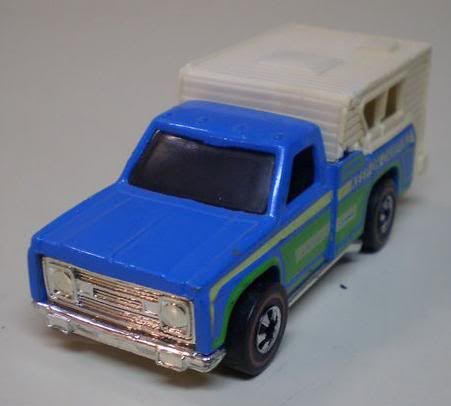
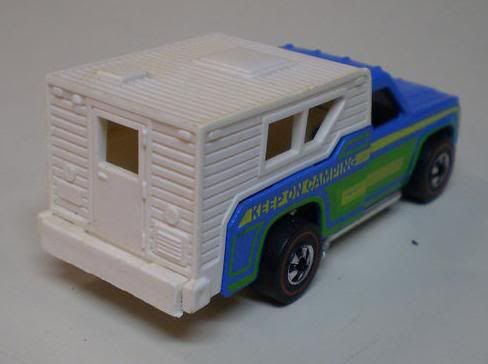

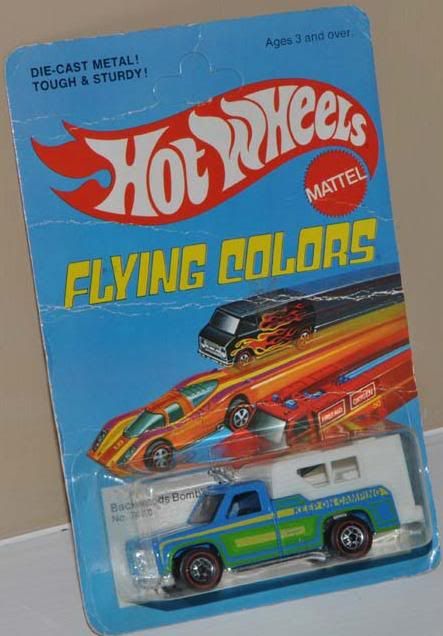


Comment